ADULTS ARE TALKING: Magpul Straight 20s, EMAGs, R×M, Waffles, and more.
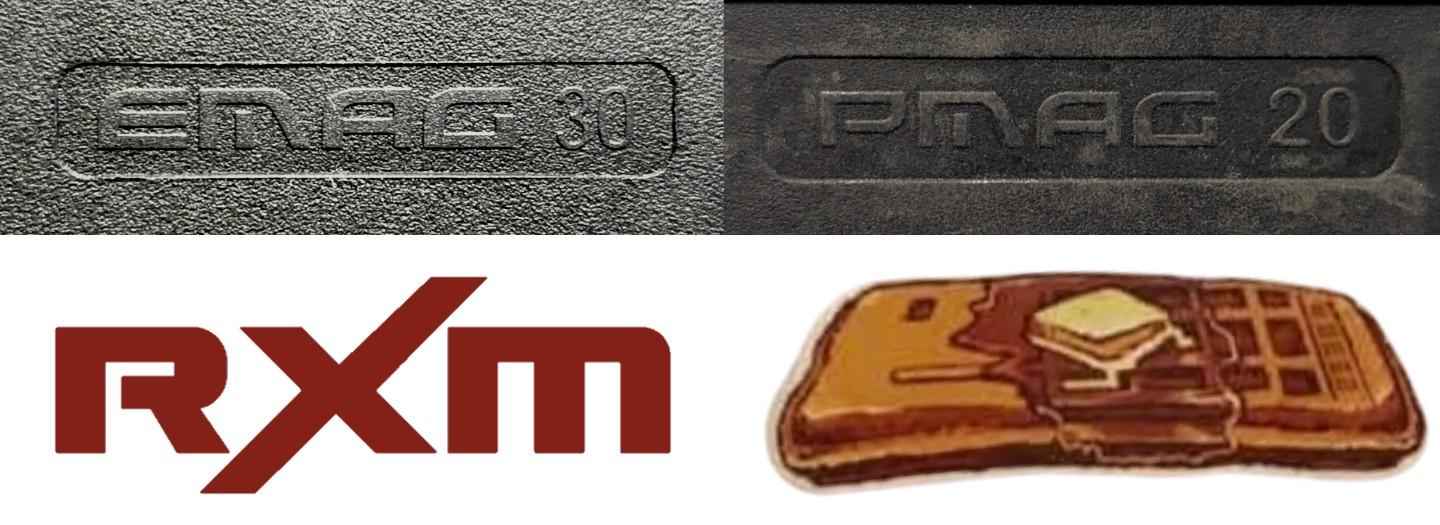
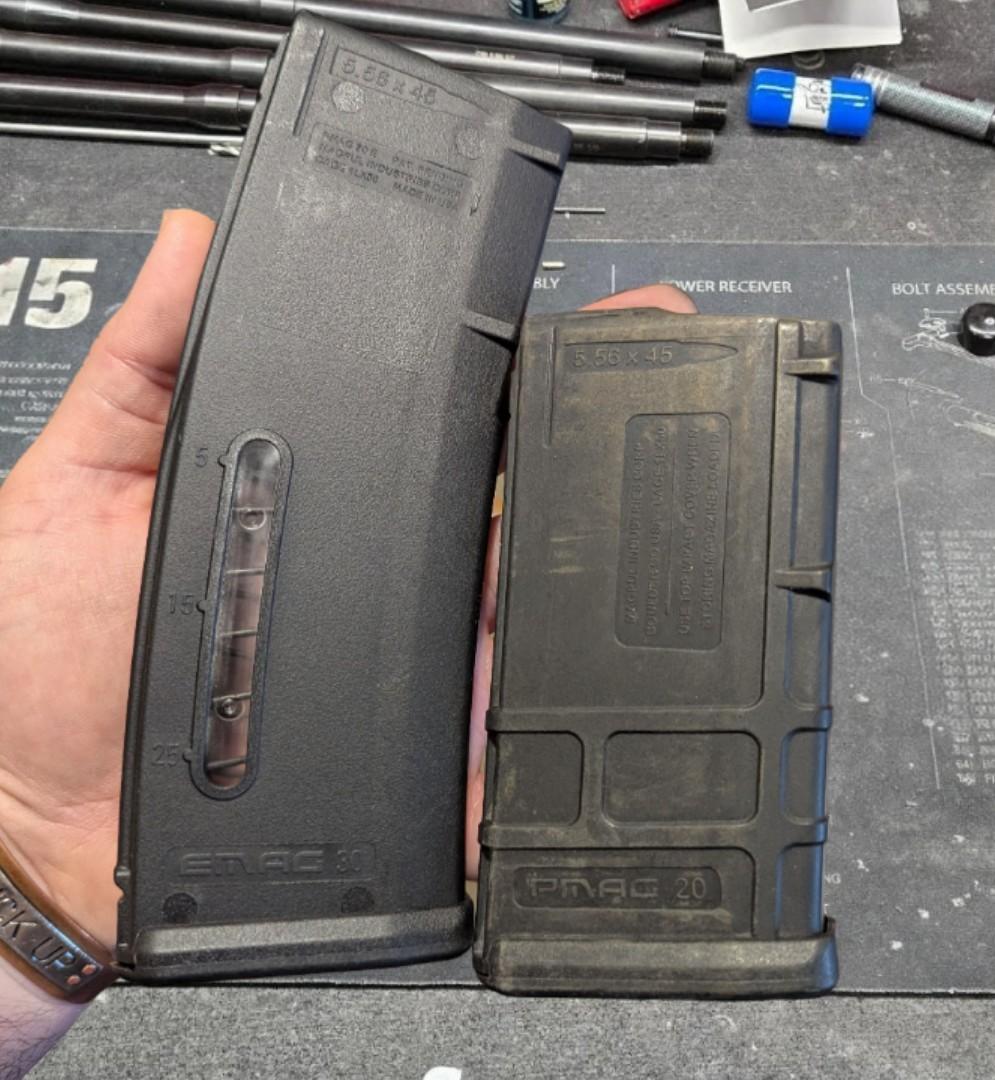
I don’t remember the last time I was able to read a Magpul post anywhere on the internet without seeing a bunch of casuals that don’t know what they don’t know badgering the company with a tone of entitlement, making product demands or telling them how to do their job. It’s been a good few years, at least. Rather than follow the lemmings of the subordinate generation and expect a fruitful response to a petulant comment, I called Duane Liptak to speak directly, as men do. While we were catching up I took the opportunity to ask him about some of the things I’d seen mentioned recently. Here’s how that conversation went.
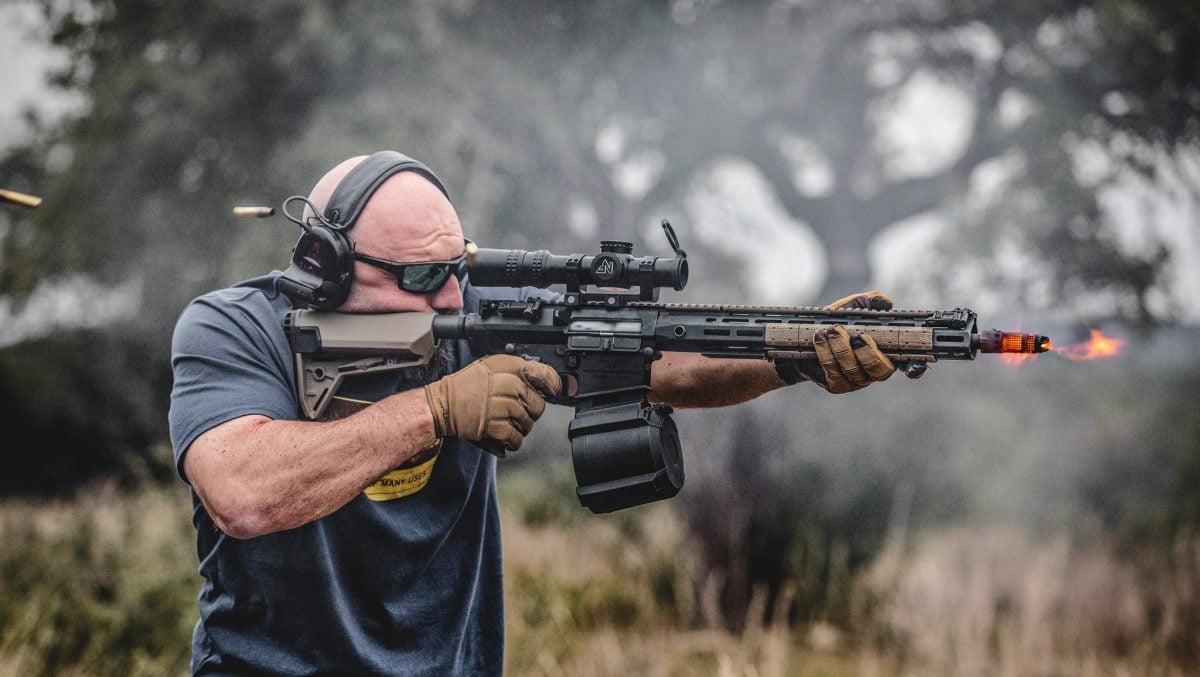
For those unaware, Duane is the Executive Vice President at Magpul. He started with the company in April 2012… right before the straight body 20 round PMAGs were discontinued. We talked about that. I’ve seen Duane and Nick Booras (another friend in the industry and former Magpul employee who worked there at the time) tell this story on Facebook a dozen times over the years, so I resolved to get the details one more time and preserve them for all to read and consider.
Here’s what Duane explained to me:

The Straight Body 20rd PMAGs (hereafter “SB20s”) were produced from 2008-2013 (Ironically, the majority of hobbyists you see harassing Magpul on social media to reproduce them weren’t even old enough to buy guns yet when this happened). They won’t be coming back however for a number of reasons, chiefly among them the fact that the molds no longer exist; their end of service life had been reached years ago and what remained has long since been disposed of. Molds aren’t something one reproduces at a snap of their fingers; we’ll get into those details in a moment.
Duane continued: The SB20s were discontinued due to many customer service issues stemming from variability in AR tolerances resulting in lock back and reliability failures. These aren’t the sort of thing anyone should have to worry about when it comes to life or death tools like firearms, especially in life or death circumstances. While there was no specific failure ratio, the grand sum of the matter was that the SB20s were inherently sensitive to variations across the multitude of AR builds out there in private hands, which resulted in compromised liability.


There’s a lot of science to this. Tapered cartridges (such as .223 Remington/5.56×45mm) in straight body magazines can’t have anti-tilt followers; they need an articulating follower (read: non anti-tilt, so they can tilt and move relative to mag body like the old USGI pattern green followers) to add pressure to the shoulder of the cartridge, so the rounds don’t nose dive inside the magazine. However this results in the rounds being loose at the front of the magazine. On top of that, dirty mags, different types of ammo, and varying ammo weight all have effects resulting in inconsistent pressure of the magazine springs, which exacerbates the movement of an articulating follower.
Furthermore, the freedom of movement or wiggle room typical of an articulating follower would cause lock back issues. Failure to lock back is considered its own failure (a very annoying one at that) and is therefore treated as its own tracked metric, like failure to eject or failure to feed, the latter of which was also experienced in quantity among SB20 users. Failure to feed was occurring because the articulating follower didn’t always present the round properly; so instead of flowing up along the feed ramps into the chamber as the bolt went into battery, the tips of the cartridges would crash into or around the chamber lugs and cause a jam.
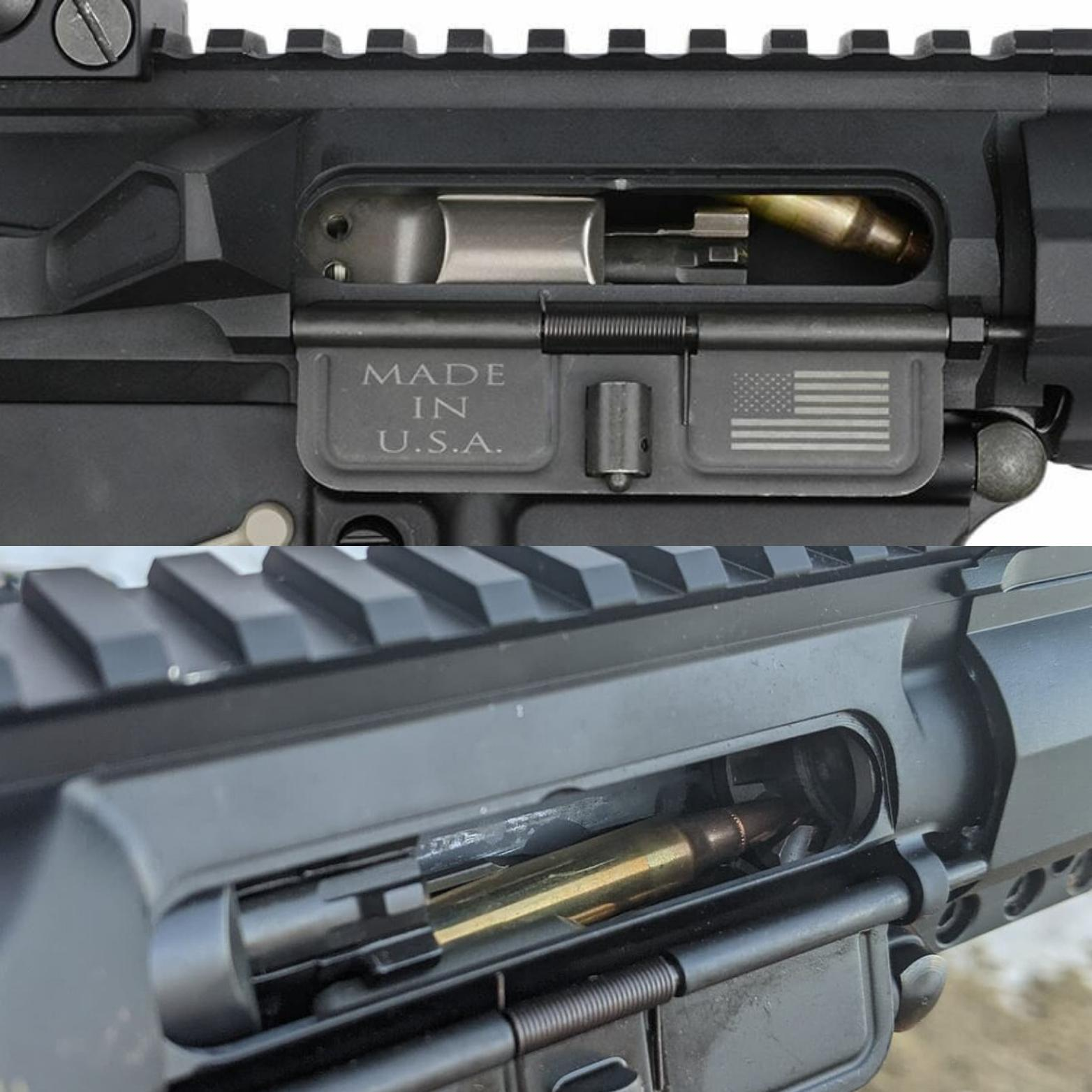
The cartridge’s drag (contact between the projectile tip and the inside of the front wall of the magazine) and tip or projectile weight dictate if the front or back of the round is touching the feed lips, which further facilitate consistent and reliable feeding. Normally this isn’t a problem, since Magpul engineered their anti-tilt followers to present the rounds at an angle such that they dodge the feed ramps as much as possible in order to take pressure off the bolt as it’s going into battery. But this benefit is entirely absent with articulating followers, hence the issues. There are so many magazines that aren’t PMAGs but still utilize Magpul’s anti-tilt followers; at work we call that a clue.
Duane elaborated: These lock back and feeding failures were a consequence of the SB20s’ articulating followers that spoke to the magazines’ sensitivity to bolt carrier speed; many of these problems manifested in overgassed rifles. As it turns out, a large quantity of ARs in private ownership nationwide are overgassed (deliberately so by some manufacturers to ensure that they’ll cycle with cheap underpowered ammo), so you can imagine the potential liability presented by the SB20s that were in circulation at the time. Just as well, these issues were especially seen when the SB20s were used in suppressed rifles, given that suppressors will boost the bolt carrier’s cycling speed.
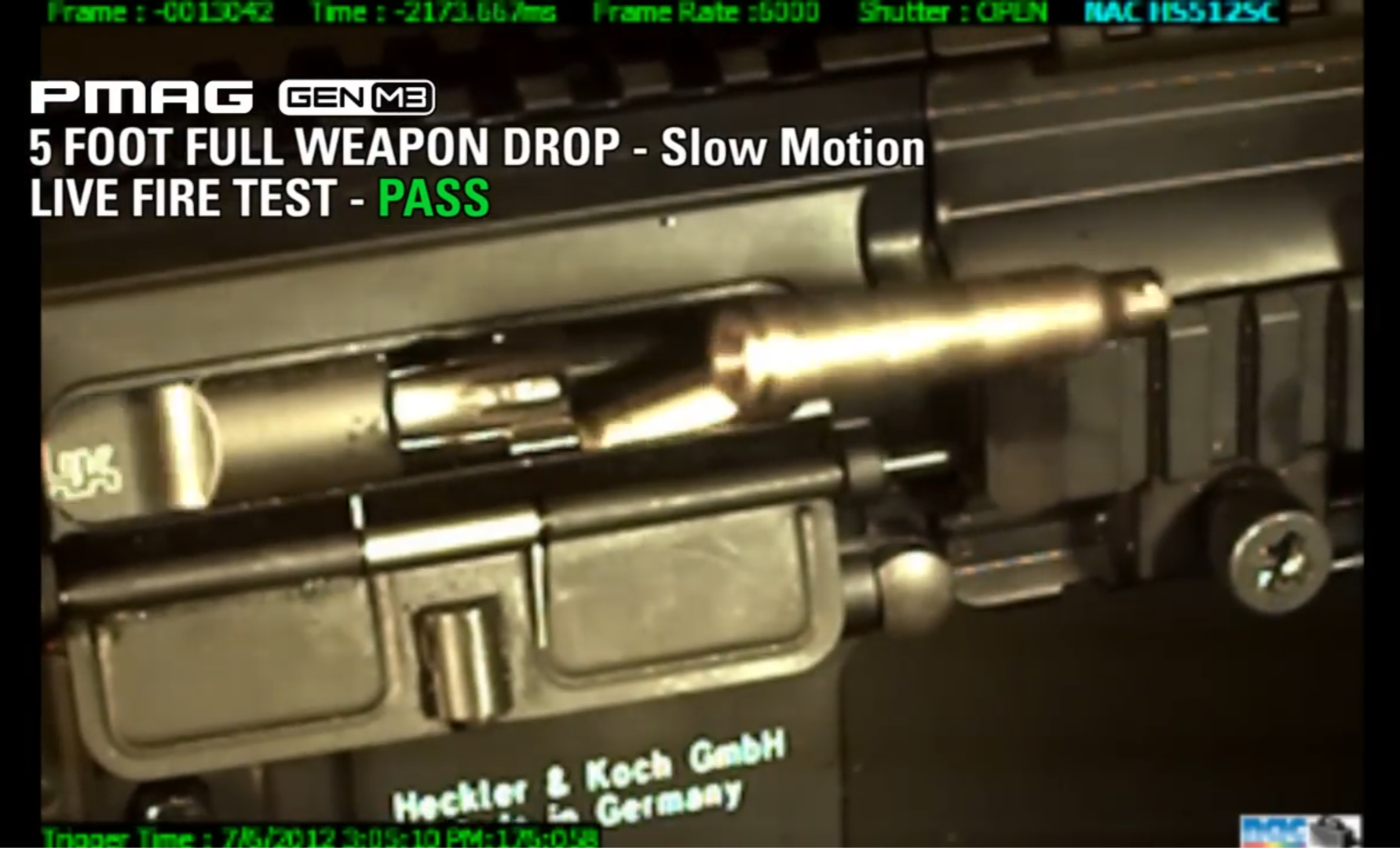
Magpul uses high speed footage during their product testing and evaluation, in this case to look at the feed flow of a magazine. The aforementioned failures were repeatable in test environments, which monitor:
• Stack rise/behavior during feeding
• Rib structure
• Follower interface
• Spring textures & strength
• Stack geometry
• Upward spring pressure
So it can’t be said that Magpul wasn’t thorough in the totality of their evaluation of the SB20s that led to their being discontinued, all things considered. It wasn’t so much that either malfunction was happening often, but because the variables that contributed to their occurrence were so broad in instance and probability that it was better to be absolutely sure than leave it to chance and leave their customers with a diceroll of reliability at best. No matter which way you try to go with it, you’re not going to escape the inevitable conclusion that the straight body magazine loaded with tapered cartridges just isn’t going to pan out as well as a properly curved magazine.
“What about straight body .308 mags?”
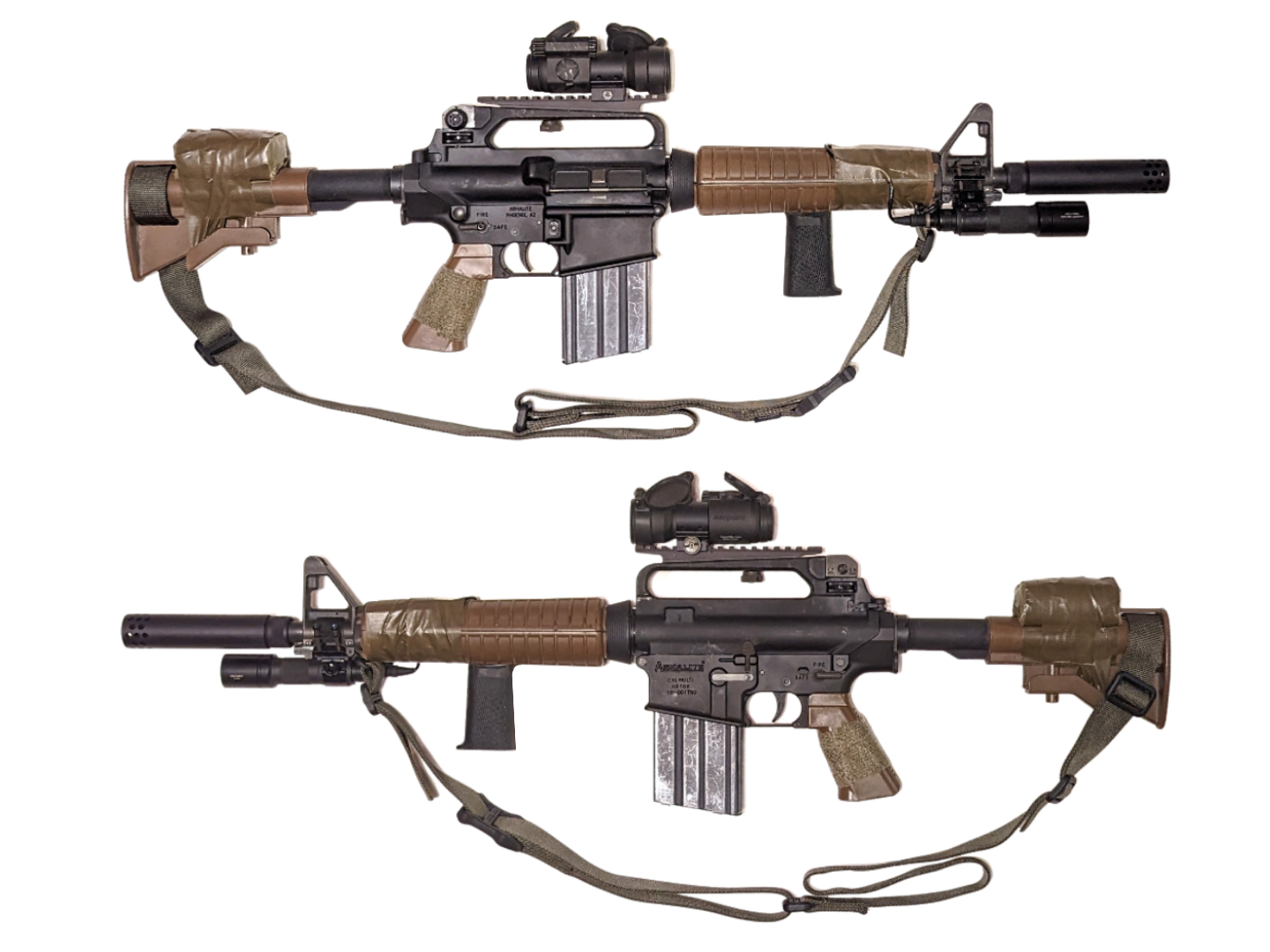
Duane told me that in 20 round straight body mags for 7.62×51, the larger cartridge is more forgiving but can still be problematic since it’s still tapered. This is why 20 round steel mags like the ones KAC & LaRue make are so expensive. Bottom line, 20 round magazines can work, but they’ll never work as well as curved mags; these experiences with the SB20 5.56 mags are what informed the curved body design of the .308 PMAGs.
Having said all of that, I knew that for some the science of why the product was inherently faulty wouldn’t be enough to satisfy their childlike curiosity; the next question would be “Well why can’t they just make new molds and bring them back?” If we ignore for a moment all the facts I just gave you pertaining to straight body magazine design flaws, I also asked Duane about manufacturing costs.
What’s Magpul looking at in cost when it comes to bringing something to market?
Starting with new molds, they easily cost six figures, even the foreign cheaply made variety; But absolutely no molds from overseas are acceptable at Magpul. Once you factor in tooling and springs, along with the molds, then come all the T&E costs, design updates and the man hours to do all of that, not including the time it takes to actually design the product. All told, you’re looking at close to if not over $500,000. To say the least, it’s not cheap. It’s way beyond the cost orbit of most people making such demands on a whim, and certainly not justifiable an expense given the aforementioned product failure details. But above all, the driving discipline is quite simple: Magpul doesn’t put out bullshit that doesn’t work reliably.
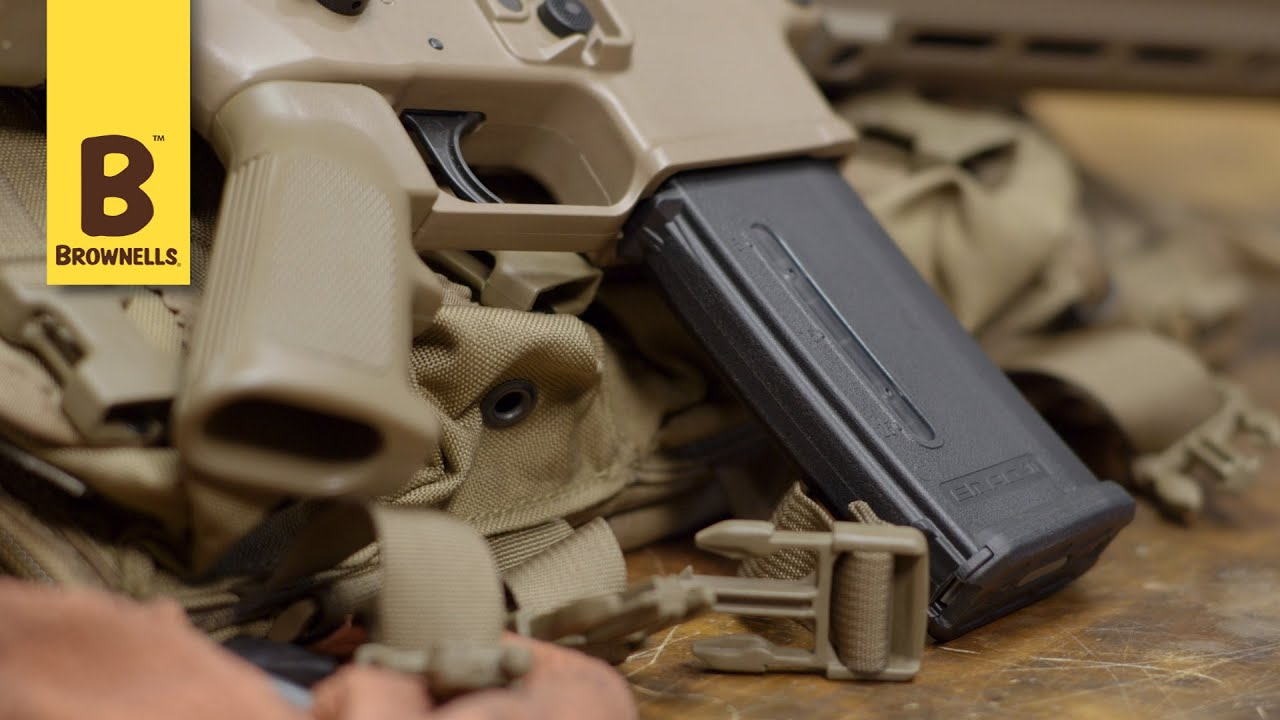
Having closed the book on SB20s, we moved the conversation over to EMAGs since those keep coming up ever since Michael Jones threw one into a gun and posted a picture of it not too long ago. As Duane explained, these weren’t simply “slick side PMAGs,” they were originally produced in 2011 to provide a PMAG for those using HK’s tighter mag well in the HK416 and L85A2. This geometry change was ported over to the Gen M3 PMAG, which has since entirely replaced the EMAG in the US market.
They still have the capability to make EMAGs since they’re a contract magazine for the UK Ministry of Defense, and were Magpul to do a limited run of EMAGs they would be of a later revision with the same magazine over-travel stop seen in the Gen M3 PMAG (see above image). The reason they’re slick sided is because weight was emphasized by the UK MOD, so the ribs were removed. However since the service life on the initially purchased quantity has exceeded service life expectations so significantly they aren’t currently manufacturing them, 15 years later.
Otherwise, the Gen M3 PMAG does everything the EMAG did, but better: They handle full weapon drops and cold weather better than the EMAG, and also have an improved floor plate. The M3 is the optimization of the EMAG geometry with some solid updated elements and features, as well as improved performance, outside the original design constraint of being the lightest possible weight, that was emphasized in the UK trials.
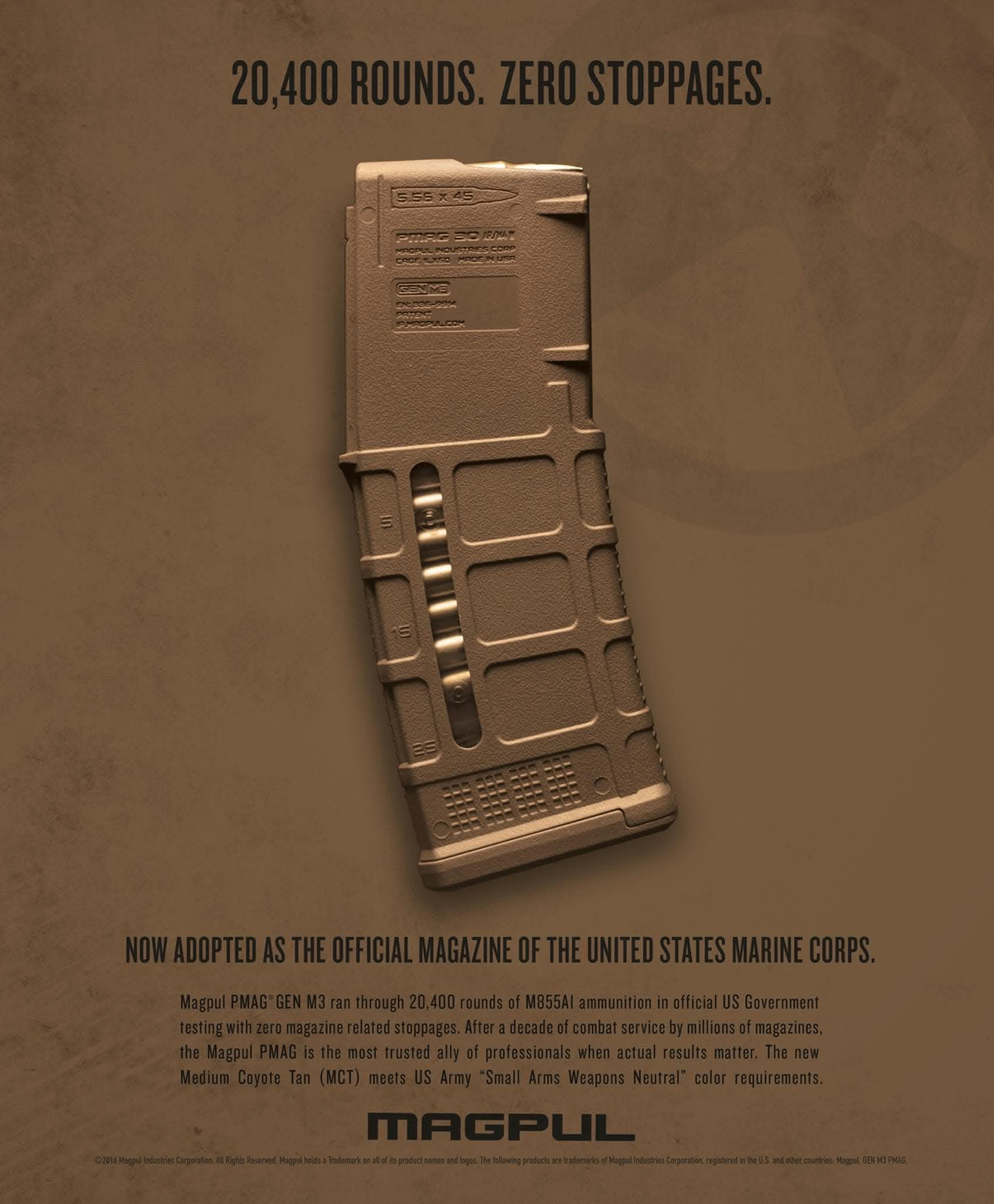
Since the Gen M3 performs as well as it does— now over 30,000 rounds between magazine related stoppages in US Gov testing with M855A1 and 100,000 rounds without stoppage in the KAC KS-1 rifle the UK MOD selected at the conclusion of testing for the Hunter program— if Magpul were to release a slick sided magazine, they would want to update everything to current standards in order for it to make sense. But since the Gen M3 does everything the EMAG does but better, vibes alone don’t justify the aforementioned production costs. Bottom line, the EMAG is not the best magazine Magpul could make today. Lest we forget: Magpul doesn’t put out bullshit that doesn’t work reliably.
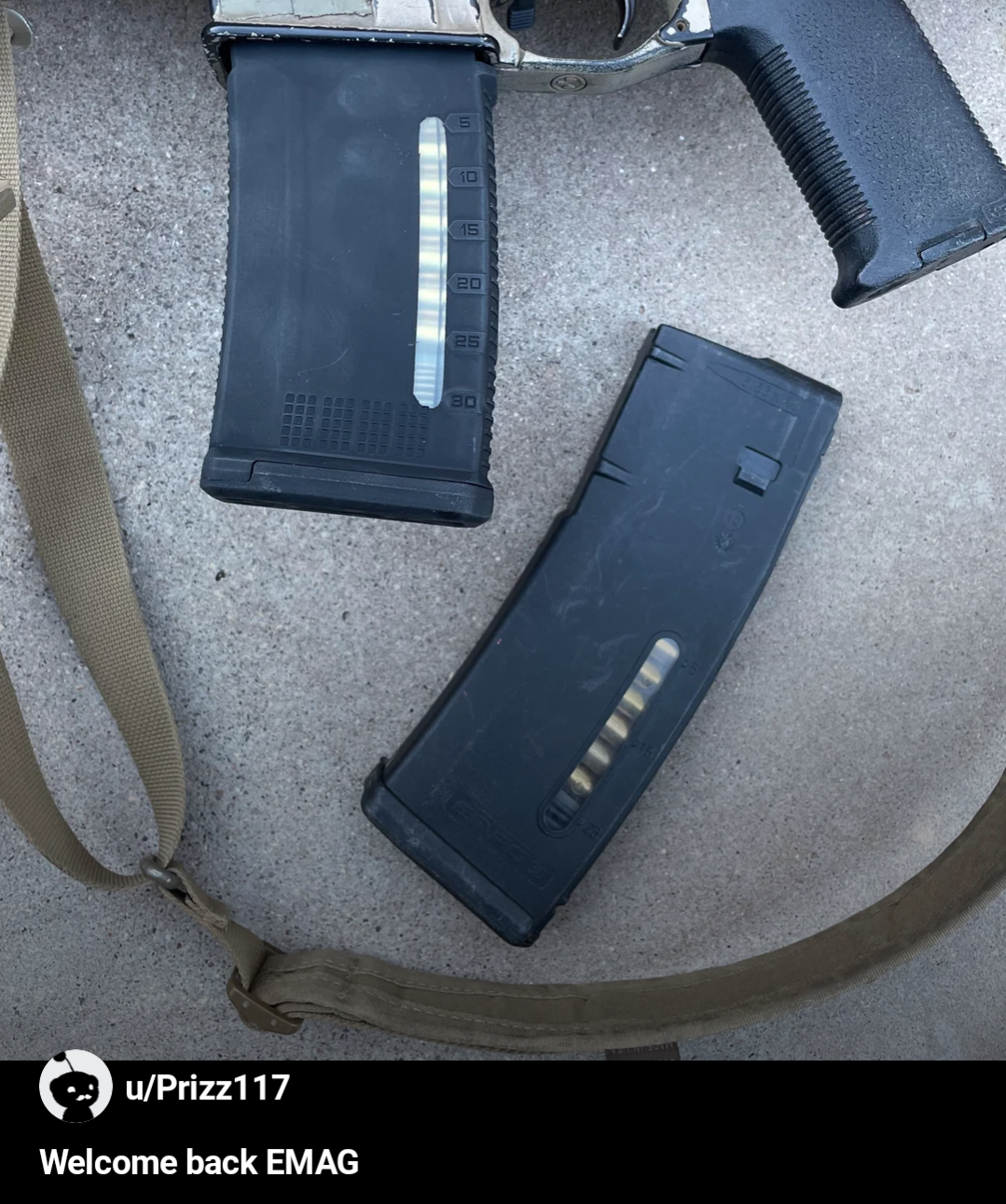
I know some were thinking it so I asked: No, the TMAG mold cannot be used to make new EMAGs. All of the molds Magpul uses are specific to the resin they’re designed to be used with, because the material flow is different between translucent and black polymer. You can spray paint TMAGs black, though; people have already done that, so. Go crazy.
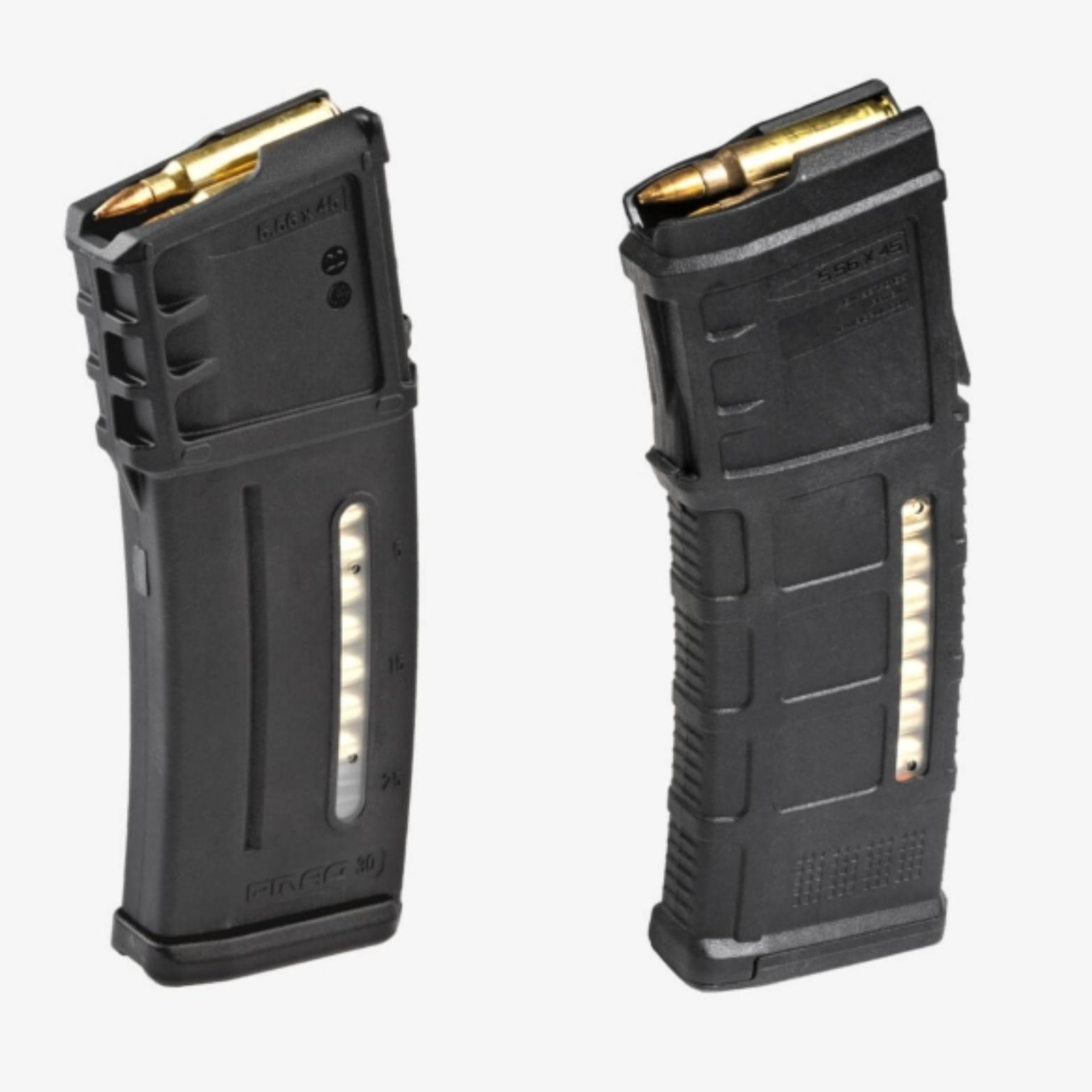
Since we were talking about magazines that Magpul makes for foreign customers, I took the opportunity to ask about some I’d seen over the years, and some I hadn’t. There wasn’t much to say: the AUG & G36 PMAGs were made in response to foreign military contracts, and weren’t really anticipated to be a worthwhile domestic release. Next, PMAGs for FALs & SCARs aren’t happening despite the existence of .308 PMAGs and AK “rock and lock” PMAGs because the magazine well and magazine pattern geometry on the FN rifles aren’t wide enough to permit the necessary thickness of magazine walls to ensure their structural integrity.
This is the reason Magpul made things like the 6mm ARC ICAR and 6.8 SPC SIX8 PMAGs tailored to a larger receiver geometry rather than try to shoehorn it into a 5.56 AR’s magazine well; when people try to fit too large of a cartridge into a small mag well, regardless of magazine/stack shape otherwise, they end up with Transverse Pressure inside the magazine. This is symptomatic of poorly designed magazines wherein you have rounds sitting on rounds resulting in an incorrect stack.
Transverse Pressure is the outward force created by an imperfect round stack that increases the friction of the entire round stack as it rises. It also stems from trying to fit a stack of cartridges into a mag well where it just doesn’t fit. Tapered rounds that don’t fit in a perfect stack will cam (slide or roll, basically) off of each other, which results in transverse pressure. Adding spring pressure to fight transverse pressure actually increases transverse pressure. So it’s not like they could make a SCAR or a FAL mag but choose not to— the science precludes it from being done to Magpul’s standards, and Magpul doesn’t put out bullshit that doesn’t work reliably.
At this point, it made sense to ask what would convince Magpul to go ahead and invest in the development of a new product in general (or one they didn’t have molds for at least). As it turns out, it’s not a polymer playground over there; there are a number of things Magpul needs to know before deciding to refine an existing product or bring a new product to market.

Duane explained, first there’s the metrics to consider, starting with Business Case: What does the popularity, profitability, and sales metrics for the product category in question look like? Then they look at Strategy: How does the product in question affect or fit in with their existing product lineup? Can existing vendors sell it to those they market to? Then of course there are the Cost/Benefit analyses at any given point.
Something with minimal social media requests isn’t considered to be worth the trouble or cost of development and manufacturing (“Everyone would buy this if you made it!” is the most unconvincing sales pitch). Thus even loud minorities are easily dismissed, and it becomes easy to see why the SB20s and EMAGs don’t pass muster through this lens once you consider that people like Duane have a fiduciary responsibility to make sensible decisions; Given that there’s so much to consider that goes into product offerings (which we’re about to go deeper into), Duane told me he’d wager that ten random people from the internet would probably end up with very similar looking product offerings if those product selections were developed with fiduciary responsibility in mind on top of the following factors.
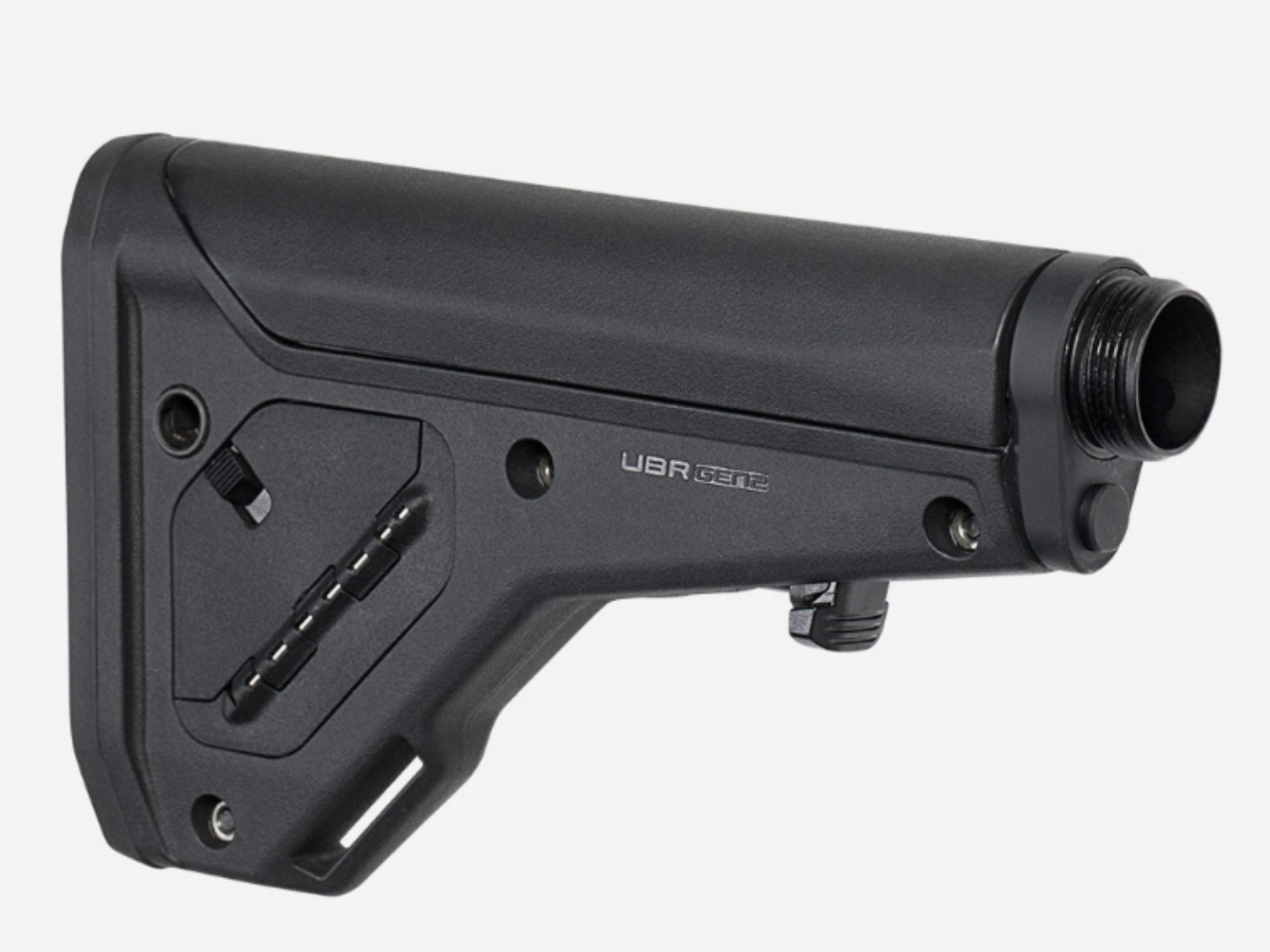
Refining or developing a “Gen 2” version of a product is hinged on constant testing, materials science, engineering, and updates to both of those over time, and last but certainly not least, hindsight. When tooling like molds near the end of their service life, it must be considered whether to spend the money to renew it as is, or to incorporate changes and updates to the design, given the opportunity. There are however some cases where an idea for an update is too good to pass up and needs to be implemented right away; part of the value of having the unfair advantage is capitalizing on it, or in this case, doing something before someone else has the same idea.
New product ideas come to Magpul in many ways. It can be organic from an internal source, or a matter of problem solving, which we saw with their approach to the DAKA GRID case for example. They identify problems with existing market options and ask themselves, “Can we solve the problem?” That leads to product conceptualization, and the process goes from there. Magpul will also mine the internet, forums, and social media for customer commentary, pay attention to end user feedback, and find the pain points or common product complaints. Once a problem is found, and conceptualization has begun in earnest, “What if we did XYZ?” gets the ball rolling.
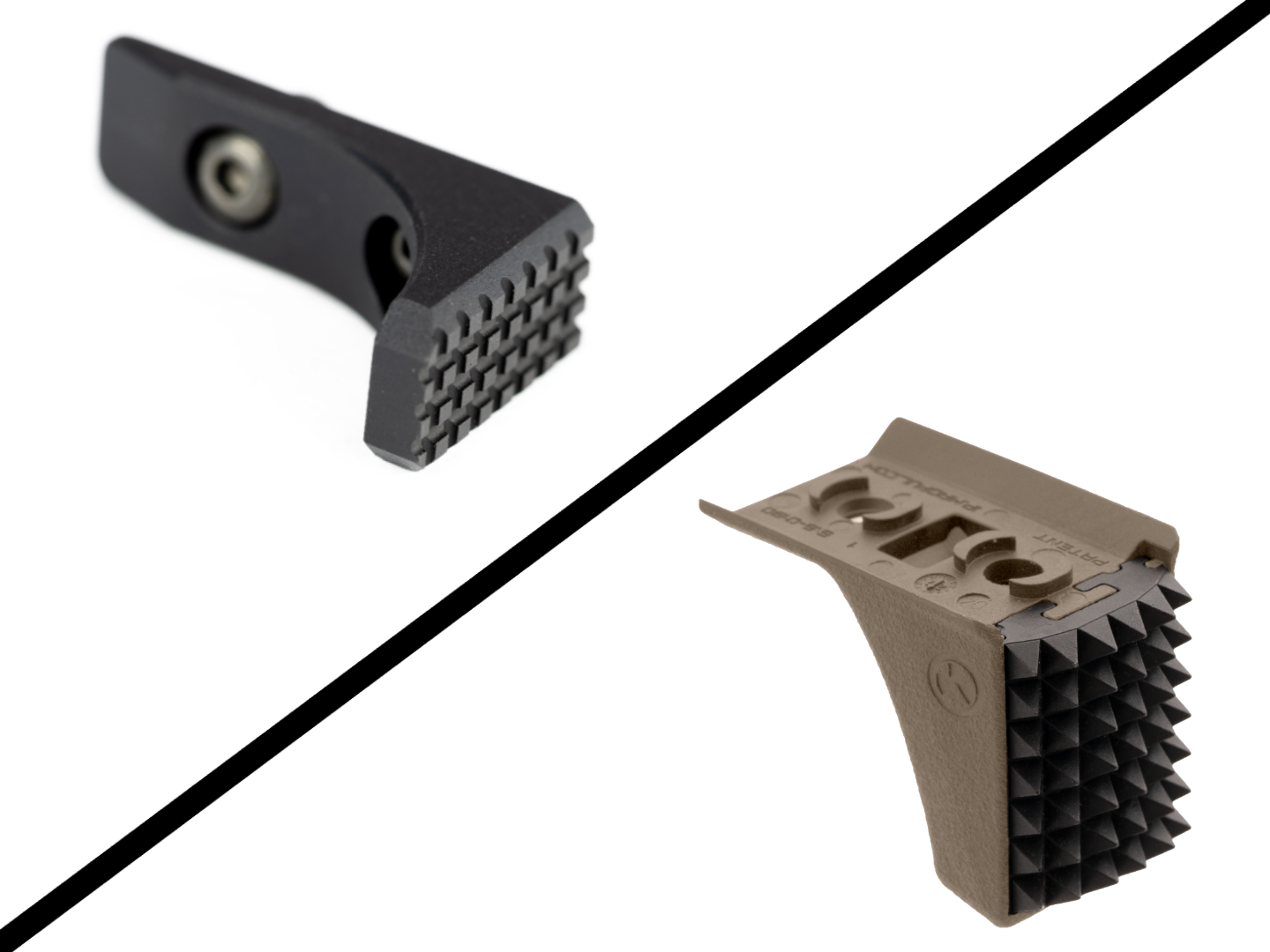
For example, Magpul found that with Barricade Stops, the majority are always formed or cut just so that the face is flat and 90° to the barricade, which was found limiting. So Magpul faceted the face of their barricade stop to address multiple angles with less teetering. So if you see people saying things like, “Who asked for this? I want _____!”, sometimes the answer is nobody did, they just figured out a better way to do it and so they did.
Magpul moves, you react, not the other way around.
I only had a few more questions for Duane at this point, mostly out of my own personal curiosity. I had long wondered, having been a customer of Magpul’s for so long: What goes into offering something in a new color? Duane explained to me that certain colorant agents used in conventional manufacturing methods introduce contaminants that initially go undetected during manufacture that compromise the integrity of the finished product.

In magazines there is zero tolerance for this, which is why FDE, ODG, Coyote Brown, and Foliage Green magazines were no longer offered. MCT (Medium Coyote Tan), on the other hand, uses newly developed colorant technology to avoid this. Apparently it’s a huge pain in the ass to develop new colors with, which is why magazines are only offered in Black and MCT.
Having gone through the bulk of my questions pertaining to the how and why of product development or discontinuation, I thought it would be helpful to ask: What would the proper method be for requesting a new product, or modification of an existing product? Straight from the source, emails to customer service are the most likely to be accepted as they’re tabulated and reviewed regularly. These carry more weight and are given more consideration than silly drive-by comments on social media. With that in mind, I thought of something else to ask Duane:
“Why do people think you didn’t think of different R×M grip sizes before they did?”
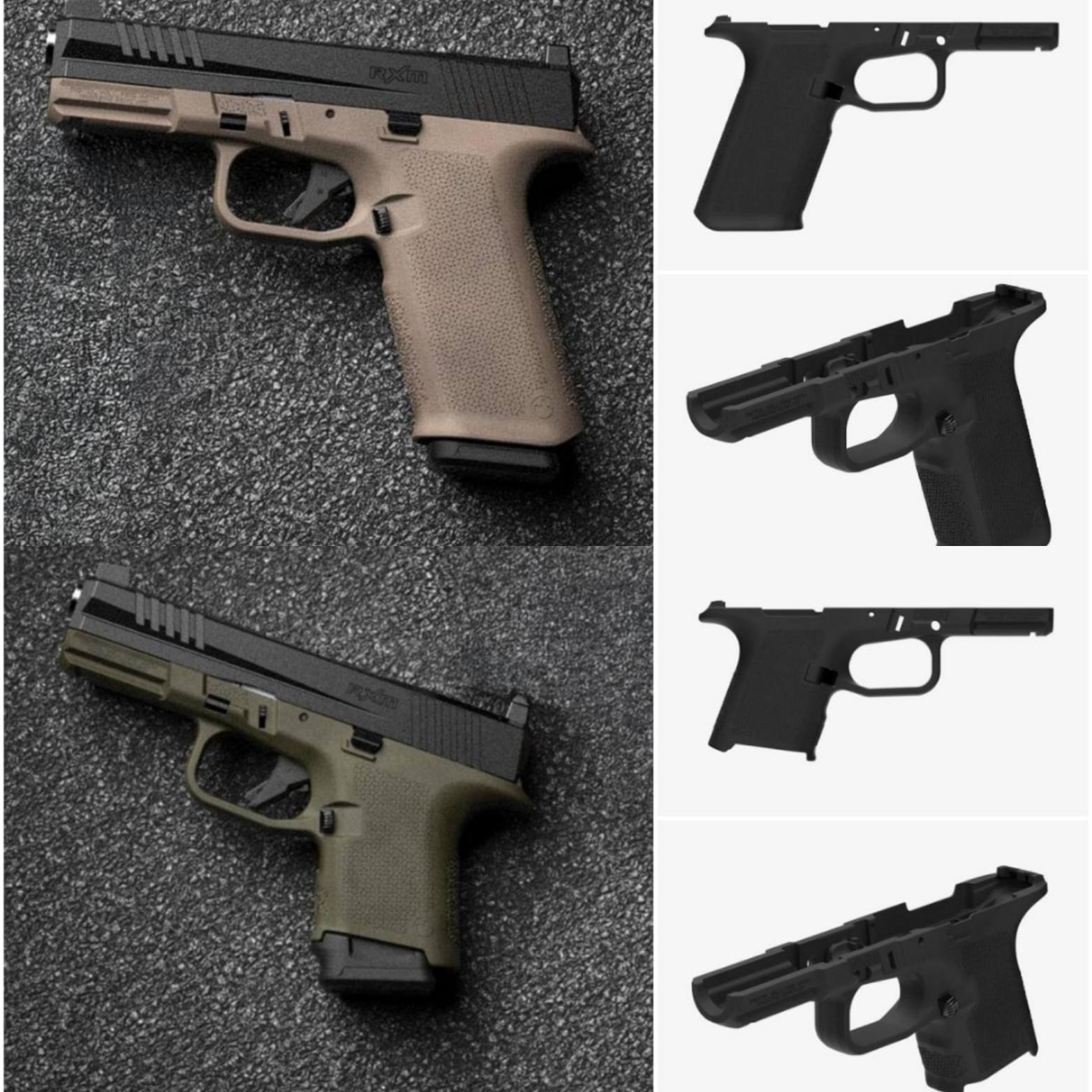
Duane explained that Magpul waited for the T&E and design updates on the existing compact frame geometry to be complete before cutting steel for other frame sizes, that way all those updates could be implemented into the production of new sizes rather than having to go back and update them all after the fact. On top of these refinements, testing and approval from Ruger internal and the NIJ need to be cleared before Magpul can bring anything to market. It’s not just up to them on a whim whenever they want, and they’re not ignoring you. You just have to wait and preoccupy yourself otherwise in the meantime. We should be seeing new stuff for the R×M by Thanksgiving; I’m writing this on Halloween. You can make it four weeks.

We also jestfully covered waffle makers, and Duane surprised me when he told me they were seriously looked into in multiple ways. Whole appliances were explored, as well as aftermarket plates for existing waffle makers. However, neither of these avenues produced satisfactory waffles worthy of the Magpul seal of approval. Magpul doesn’t put out bullshit that doesn’t work reliably.
That concludes my report. I can’t imagine what people will think to incessantly whine about next, but I’m sure once it comes up I’ll figure out who to ask and get straight answers from. Until then.
Stay Dangerous
Stay in this L.A.N.E.








